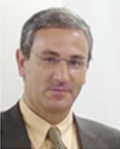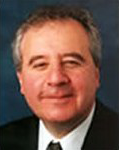Summary
The societal challenges presented by aging civil infrastructures in the US are pervasive - cutting across our nation’s transportation, water, and power systems. Many industrialized countries in the world face similar problems. Although focusing events such as the 2007 collapse of the I-35W Bridge in Minneapolis and the 2005 inundation of New Orleans by Hurricane Katrina received much attention, these events are in fact just warning signs for societal risk due to the failure of infrastructures that have been long under-funded, and components of which were maintained, repaired or replaced without recognizing them as interconnected, interdependent, multi-scale and multi-domain systems.
As an example, on December 23, 2008 a 44-year old 66-inch water main break in Bethesda, MD created a 4-ft high torrent on the highway, trapping 15 vehicles. Helicopters used buckets to save some of the drivers, while the county's Swift Water and Technical Rescue teams used boats and ropes for others. Serving 1.8 million suburban Maryland customers, the Washington Suburban Sanitation Commission has been plagued by an increasing number of water main breaks. In 2007 these reached a record of 2,129. Many of the older urban water and sewer utilities in the Eastern USA face similar problems. When we consider that congestion costs the U.S. over $200 billion per year (USDOT 2006), over 80,000 U.S. bridges are designated as structurally deficient (FHWA 2007), 41% of wastewater utilities are not solvent (USGAO, 2004), and over 1/3 of water utilities routinely defer maintenance due to insufficient funds (USGAO 2004), and the increasing frequency of power blackouts covering large urban areas, the increasing enormity of the problem becomes clear.
There have been recent calls and promises of significant funding for infrastructures, most notably as a part of President Obama’s economic recovery package. However, a valid question that keeps coming up relates to prudent and transparent decision-making for selecting alternative strategies for infrastructure financing or revenue generation, as well as for prioritizing expenditures for existing infrastructures for repair, rehabilitation, replacement, decommissioning, as well as removal from use and converting to green space. Infrastructure planning, engineering and management decision-making is an extremely complex problem since we now recognize that decisions involving “multi-domain systems” may lead to many unintended consequences over different time-scales. While we recognize the need for a systemic approach to infrastructure decision-making, and we have even borrowed the term “asset management” from economics and finance as a term for such an approach, we still face major challenges before we can formulate a set of universal principles for asset management.
Asset management is a complex paradigm, requiring stakeholder consensus on the values, policies, strategies and tactics related to infrastructure services, performance metrics and associated management trade-offs. No single discipline and certainly no one sub-discipline can claim ownership of this problem. A multidisciplinary group of engineers, scientists and stakeholder representatives from academe, government and industry have to join forces to develop consensus definitions and principles for infrastructure asset management. Some of the Sessions that would come together in this mini-symposium to dissect the problem of infrastructure asset management are tentatively listed in the following.
An Analysis of the Highway Transportation Infrastructure in the USA
Organizer and Chair: Hamid Ghasemi, FHWA This Session is expected to review the statistics, conditions and performance of the Highway Transportation Infrastructure in the USA. Facts regarding owners, jurisdictions, financing and revenue sources and current management approaches will be analyzed. Resource needs and current vision of the FHWA to deal with any challenges will be summarized. Presenters are anticipated from Pavements, Bridges and Operations/ITS Research groups in addition to some select state DOT representatives.
Current State of Highway Transportation Asset Management in North America
Organizers and Chairs: Stephen Gaj, FHWA and Chris Wade, Director of Infrastructure, Calgary This Session will offer an overview of the current status of asset management in the USA and Canada. Various activities by Federal and State agencies, AASHTO and TRB in USA and efforts in Canada by CRC, various agencies and municipalities will be presented.
Current State of Highway Transportation Asset Management in Europe (2 Sessions)
Organizers and Chairs: Leo Klatter, Centre for Public Works, the Netherlands and Jens Sandager Jensen, COWI A/S, Denmark, Helmut Wenzel, VCE, Austria This Session will summarize and synthesize the current status of asset management in various European Countries. We anticipate presenters from Denmark, the Netherlands, GB, Germany, Austria, France and Switzerland to be invited for these Sessions.
Current State of Highway Transportation Asset Management in the Far East (may be 2 Sessions)
Organizers and Chairs: Hyun-Moo Koh, Seoul National University, Korea, Hitoshi Furuta, Kansai University, Japan and Ou Jinping, Harbin Insititute of Technology, PR of China. This Session will summarize and synthesize the current status of asset management in various Far Eastern Countries. We envision presenters from Japan (3), Korea (3), PRChina (2), Australia and New Zealand (2).
Highway Transportation Asset Management: Towards the Future
Organizers and Chairs: Ali Maher (Rutgers), Emin Aktan, Frank Moon, Patrick Gurian and Franco Montalto (Drexel/IIS), Dan Frangopol (Lehigh), Samer Madanat (UCBerkeley), Ross Corotis (UC Boulder), Louise Comfort (U of Pitt), and Susan McNeil (University of Delaware)
1. Identification of the Multi-Domain Infrastructure System:
Human Elements: Institutions, Culture/History, Organizations, Individuals
Natural Elements: Climate, Environment, Air, Water, Soil, Plants and Animals
Engineered Elements: Highways, Bridges, Safety, Operations and ITS
d. Sustainability: Ecology, Society, Economy. The goal of the above Sessions would be to identify the systems that come together in multi-domain infrastructures from the viewpoints of their respective experts. System-identification has been a research area in electrical engineering and structural mechanics, offering great potential for validated modeling and simulations of multi-domain systems for scenario analysis. In this Session experts from each domain will discuss the terminologies, world-views and mind-models that prevail. Can we develop and share a common language and value system? Given that Sustainability is emerging as a value system promising to link each domain of infrastructure systems, how this paradigm may be leveraged as the principal objective function for asset management will be explored. European, US and Canadian research on Sustainability will be presented.
2. Roadway to Sustainable Asset Management:
Performance Metrics incorporating Uncertainty and Risk
Data and Modeling Needs for Performance Based Asset and Risk Management
Technology Integration Needs and Technology Development Strategies
Panel: International Organization for Research, Development and Demonstrations


























